The Cautious Bull
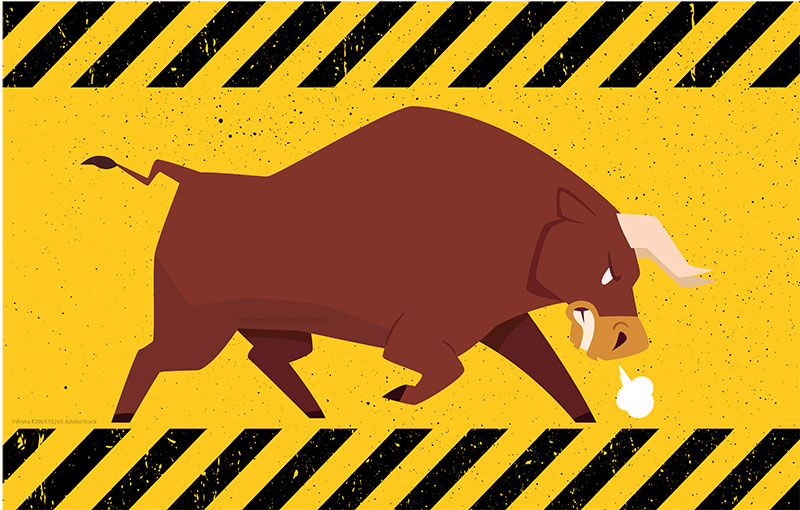
What drove the markets last year, is continuing in 2020. Last year we saw the U.S. outperform the rest of the World, led by the Tech Sector (Fact Set). The Nasdaq last year finished up over 35%, soundly beating the S&P 500 and Dow Jones.
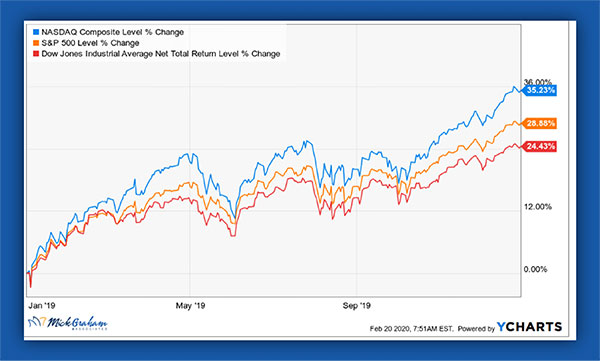
What led the outperformance were the biggest companies in the indexes, judges by the overall index, beating the Equal Weight Index. The S&P 500 is a Market Cap Weighted Index, meaning that the bigger companies have a bigger percentage of the index. The Equal Weight Index does just that, it gives every company in the index the same weighting. Therefore, if the equal weight index underperforms, like it has for the past few years, it means the larger companies are outperforming the smaller cap companies in the index. The reverse happens with the smaller cap companies.
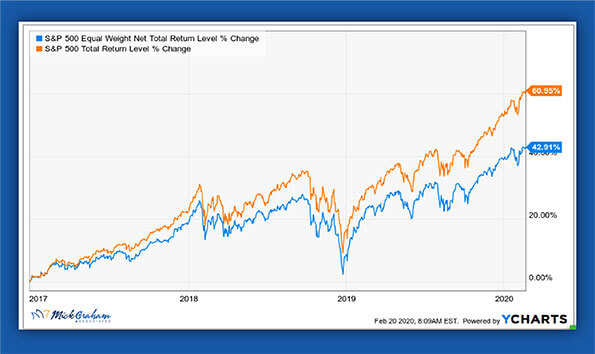
I’m a believer of reversion to the mean, especially when it comes to characteristics of an index. Although the market cap weighted index is outperforming currently, you’ll see it’s not always the case. In fact, you’ll find specific time frames when the opposite has happened. Since the inception of the Equal Weight Index (back in the late 90s) you’ll see the Equal Weight Index is still an outperformer during certain time periods.
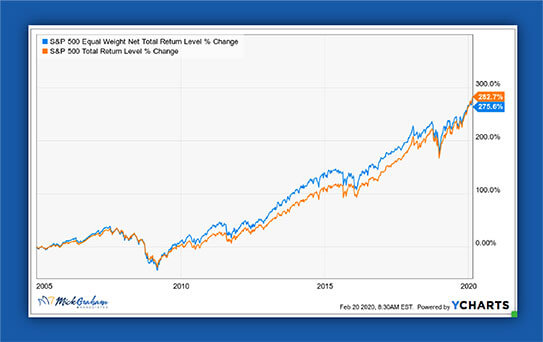
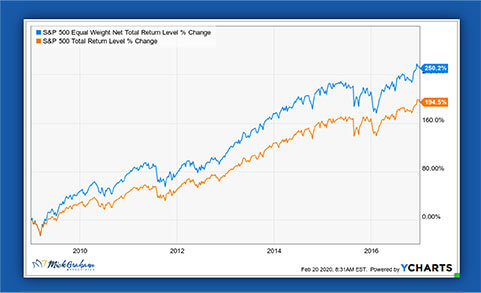
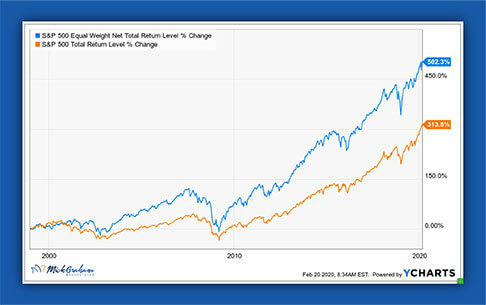
Just as a reference, the largest company in the index (Apple) has a market cap of 1.415 Trillion, and the smallest company in the index (presently Fossil) has a market cap of 309 Million. Stocks go in and out of the index based on the rules of the index, and according to Standard & Poor’s, the index turns over around 4% of the index each year.
Year to date we have seen the S&P 500 index is up 4.3% versus the Equal Weight is 2%, while International Indexes are negative Year to Date. You will hear quite often “don’t fight the trend”, and a lot of short-term technical indicators show that we are in a short-term breakout, (described by B/O in my scribble on the graph below).
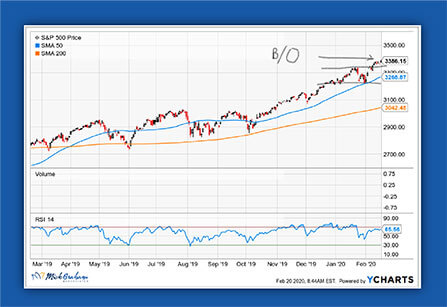
My view is as this market continues to rally, that it is becoming more disconnected from the fundamentals. It all comes back to earnings, no matter which way the market goes. Those that have listened to me discuss “It’s all about earnings”, will know that it’s usually been when the market is in a downturn. Well, it works both ways.
Where we are now is where I believe the market should be at the end of the year based on my S&P 500 estimate of $174 of earnings and 19.5 times earnings…3393, roughly where we are now. Remember that the markets overshoot in both directions and you’ll need to take advantages of the overshoots upwards to counter the down moves that will inevitably happen.
That doesn’t mean that you should continue to pump money into things considered expensive. There are four stocks that make up 14.8% of the index, although have given us over 50% of the return so far this year (Source: FactSet). It’s time to be selective.
The Nasdaq’s recent rally looks impressive, however more recently the percentages of stocks above their 50-day moving average have declined to below 50%. This is a concerning indicator. You would ideally like to see a bigger number of constituents participating in a strong market move.
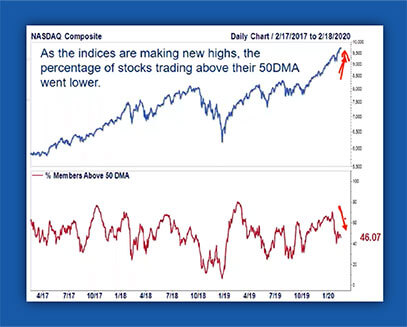
I’m not falling off the Bull train yet, however I’m paying attention to the caution sign.
We got to see the first Democratic Primary Debate with Mike Bloomberg, and it was a total free-for-all. Great to see them beating the crap out of each other. I think viewership would go up if we put them in the big Sumo suits and let them go at it. Yes, that sounds juvenile, but they made me think that way due to all the hand raising. Our next moderator should be a fourth grade teacher.
Lastly, we had the release of the Conference Board LEI, which I follow closely and use as a guide to how the overall economy is looking. Remember, it’s accurately predicted “all” of the past noted recessions. The index was positive after 3 months of decline, indicating we are still on an economic growth path, albeit slow. On average this index has declined for 13 months prior to the start of a recession, so technically we get to put any future recession off for another year. 😊

Source LEI
With that said, here’s the Buy/Sell

Source MGA
The information contained in this report does not purport to be a complete description of the securities, markets, or developments referred to in this material. The information has been obtained from sources considered to be reliable, but we do not guarantee that the foregoing material is accurate or complete nor is it a recommendation. Any opinions are those of Mick Graham and not necessarily those of Raymond James. Expressions of opinion are as of this date and are subject to change without notice. There is no guarantee that these statements, opinions or forecasts provided herein will prove to be correct. Investing involves risk and you may incur a profit or loss regardless of strategy selected. Keep in mind that individuals cannot invest directly in any index, and index performance does not include transaction costs or other fees, which will affect actual investment performance. Individual investor's results will vary. Past performance does not guarantee future results. Future investment performance cannot be guaranteed, investment yields will fluctuate with market conditions.
The S&P 500 is an unmanaged index of 500 widely held stocks that is generally considered representative of the U.S. stock market.
The NASDAQ composite is an unmanaged index of securities traded on the NASDAQ system.
Leading Economic Indicators are selected economic statistics that have proven valuable as a group in estimating the direction and magnitude of economic change.
An equal-weighted index is a stock market index – comprised of a group of publicly traded companies – that invests an equal amount of money in the stock of each company that makes up the index. Thus, the performance of each company’s stock carries equal importance in determining the total value of the index.

